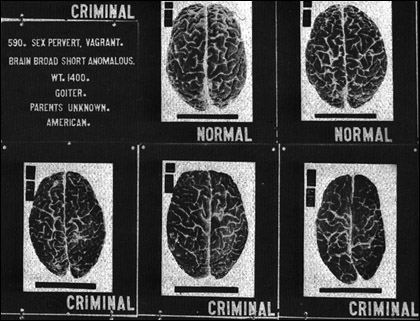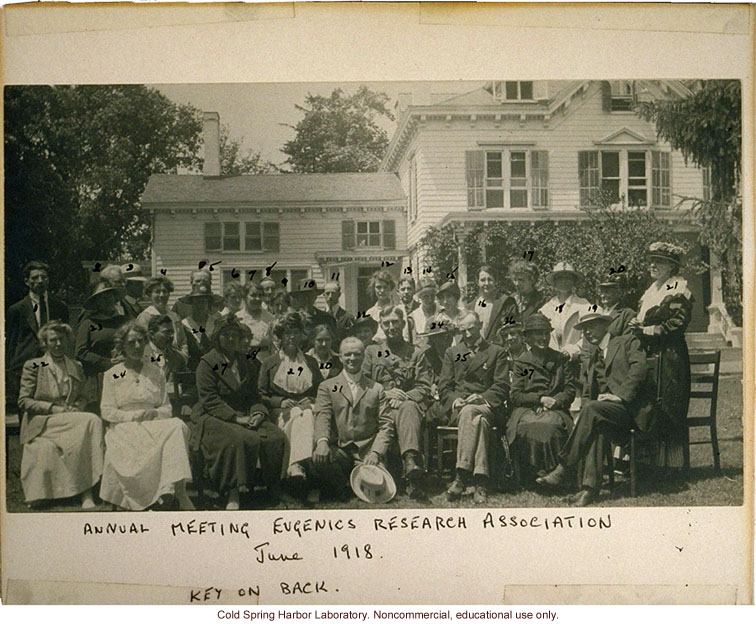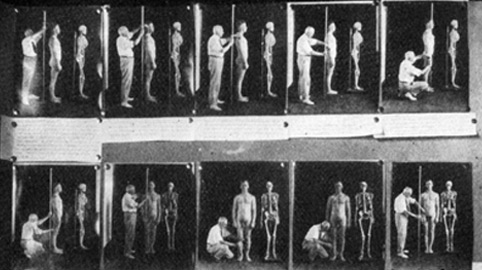The historiography of science, race, and gender in the US South and the legal-historico-scientific lessons it provides. This is the final instalment of a three-part series. Read Part 1 and Part 2.
Many white Southerners fulminated against scientific claims on the equality of all races, and this consensus made conspiracy claims central to segregationist scientists. One of the biggest proponents, and also the one who made the most complete statement about racial science was Louisiana writer Stuart Omer Landry.
Among the arguments made by Landry were that the movement of the “equalitarians” strove to undo all the progress made in and by white civilisation. For Landry, racial mingling would lead to the destruction of the white race, considered to be the only race capable of building a civilisation (by willfully ignoring the many other ancient civilisations built by those who do not fall into this category, which would be almost all of ancient civilisations).

It made common sense to him that race-mingling was dangerous, regardless of what the biologists said. To Landry, all theories that found race-mingling as unproblematic were unproven.
Landry also argued that “real” science had proven that not all races are equal in abilities, by making the Boasian argument of racial differences as actually cultural differences a scapegoat to his arguments. According to Landry, the history and theory of evolution proved that race preceded culture and that the high forms of civilisation was a result of efforts of an “energetic, aggressive and inventive people.” (see Jackson Jr., John P. Science for Segregation: Race, Law, and the Case against Brown v. Board of Education, pg. 70)
Finally, Landry argued that the darker races had always been “freed” by their white benefactors. Landry could not understand why the African-American communities would demand for equality, believing that the latter would be way happier under segregation (Jackson, pg. 71).
Most scholarly reviews largely dismissed Landry’s “tattered battery of arguments” as attempts at justifying the past and present racial order. Landry took the lack of reviews as proof of its truth and that he had said something that made the scholarly world uncomfortable and thus conspired to ignore him. Landry’s claims about the equalitarian conspiracy would be given new life when the US Supreme Court declared school segregation unconstitutional, in the Brown vs Board of Education that polarised Southern politics (Jackon, pg. 72).
The Brown court had cited social-scientific evidence of findings that indicated racial segregation in public elementary and secondary schools to be psychologically damaging. In the eleventh footnote of the opinion, the Court cited psychological works to support its claims. However, the actual citations were considered controversial even for the defenders of the decision.
New York University professor of jurisprudence, Edmond Cahn, argued that it would had been better to utilise solid legal reasoning rather than rest the foundation of the case on social-scientific evidence. Social psychology was still a newly developed science, which was dangerous for law. Cahn argued that it was imperative for the judges of court to discern the difference between “objective” science and advocacy science.
Where the white Southerners were concerned, the citation was a triple affront. They considered federal institutional intervention to be an affront to their states’ governance as the memories of defeat at the Civil War and the controversies of the Reconstruction were still fresh. They also argued that the law had substituted due process with social science. They also believed that the “socialistic” social science were produced by Communists and therefore could not be trusted.
However, despite the proclamation of distrust towards social science, the Southern whites approved at least one form of the scientific evidence, which was that of IQ testing. Blacks would always be inferior to the whites, and the proof in paper was their IQ test scores. However, the white Southerners’ beliefs in this issue were several decades out of date, as what they gave free reign to in the 1950s were already debated several times over in the 1920s. It also seemed that they chose to bypass the UNESCO’s declaration on race through the invocation of science, made in the 1950s, even before the Brown resolution.

A 1984 report by George D Strayer, commissioned by the appropriations committee of the House and Senate, had documented the wide disparities between the facilities provided for each race. It was found that classes were much larger in the colored schools than in white schools, too much larger than practicable. When the House committee of the District of Columbia conducted hearings on the public schools conditions in the District, they were less interested in hearing about the underfunded school system for African-American schoolchildren than about juvenile delinquency and the reported low standards in the District public school system. Witnesses were cross-examined regarding the low test-scores of the Afro-American schoolchildren in Washington’s segregated school. However, those who led the hearings were less interested in confronting the fact that many of these children were given very inferior quality education than in proving their point that the poor scores had to do with the innate and immutable differences in the ability of different races to learn. Here, we get to see how legal was recruited to further a political and racial agenda, and how therefore law, like science, is not free from value-ladenness and could be manipulated, together with the judiciary that governs its process, to serve particular ideologies in order for those with control over its process to obtain a desired outcome.
According to Jackson —
The Citizens Councils’ headquarters in Mississippi issued a twenty-page summary of the hearings, noting that the results of the IQ tests demonstrated that the white elementary students had an average IQ rating of 105, which was above the national average. The Negro elementary students had an average of 87, or 13 percentile below the national average. The Citizens’ Councils’ pamphlet also included the recommendation of Davis, William, and the two other southern representatives on the subcommittee that racially separate public schools be re-established for the education of white and Negro pupils in the District of Columbia.
(Jackson, pg. 77)
The document above is textual proof of how interpretations can be taken completely out of context, with the entire testing process, variability of the subjects and backgrounds, as well as configurations of the tests ignored. The Council also intentionally overlooked the obvious flimsiness of conclusions derived from arguable analyses of data obtained. Despite the drama, the white Americans were not the only ones involved, as African-American leaders, such as Horace Mann Bond, in working with the NAACP (National Association for the Advancement of Colored People), had battled against racial interpretation of the IQ test and had provided the NAACP with historical evidence on education during the Reconstruction era, especially when the African-American communities had a semblance of legal rights and had managed to build schools and colleges to provide quality education to members of their community in light of the indifference of their white neighbors.
However, as I’ve stated above, many who pushed for a one-sided view of events, or who chose to ignore any events that might imperil their objectives, projected the irrationality that a person could descend to in order to fit his/her material examples into his/her ideology.
The study of racist propensities in science itself is a fraught project that does not always lend to glaring constructionist views, or to the idea that there is an intentional racist project at work. While historical conditions of the South, as well as the existence of documents, may prove that there are loud tones of racism in the utilisation of science to preach segregation or eugenics program, much of the work in science can ultimately contribute to racism as long as we are culturally conditioned to believe that there are always particularly physical attributes that are better or more privileged.
Discoveries and findings made in biomedical and biological sciences can be put to use for racist projects, such as in the selection of particular favorable phenotypes or in prioritising research into particular diseases. Others would include the prioritising of scientific projects that do not take into consideration the needs of minorities but which further the goal of world dominance. An example would be the Space program, which was a hangover from the Cold War days (as are most of Big sciences).

Moreover, there are structural racism that may not be intentional but is a progeny of centuries and decades of privilege. I would like to end with this interesting argument made by Sandra Harding, which echoes the debates of science funding and also the different sciences that one is able to participate in, depending on one’s level of access, resources and privilege.
… under what conditions could it occur that a society with widespread and powerful forms of structural racism — a race-segregated social structure — could produce sciences that did not participate in justifying and maintaining such white supremacy? The problems of interest to a culture’s sciences at a given moment in history, the hypotheses proposed to explain such problems, the methods chosen to test those hypotheses, decisions about what should count as evidence for or against such hypotheses, or the goals to be achieved in resolving the problem — how could these aspects of sciences not contribute to maintaining the existing social structure and agendas of the white supremacist society that decides which scientific projects to support? This question directs us to a richer understanding of the power, or lack of, of scientists’ intentions. A white supremacist society need not be one in which all or any white individuals intend or prefer their supremacy. It can also reasonably designate societies where most whites report that they oppose white supremacy, yet the values and social structures of the society de facto maintain racial inequality. In such cases, scientists can end up advancing white supremacist agendas though they have no intention of doing so. And this second point directs us toward identifying strategies to counter the unintended complicity of sciences with their cultures’ white supremacist agendas.
(See pg 18 of Sandra Harding’s Science and Social Inequality: Feminist and Postcolonial Issues. Chicago: University of Illinois Press, 2006)
As mentioned, most women were not major players in much of science in nineteenth and the first part twentieth century United States. If they had made any substantial contribution, their names and achievements were not so well documented. The same could be said about the science of genetics and female researchers in eugenics.
Complete works cited in this series:
- The Nature of Difference: Sciences of Race in the United States from Jefferson to Genomics. Eds. Evelynn M Hammonds and Rebecca M Herzig. Cambridge, MA: MIT Press, 2008.
- Race and Science: Scientific Challenges to Racism in Modern America. Eds. Paul Farber and Hamilton Cravens. Corvallis: Oregon State University Press, 2009.
- Glenda Elizabeth Gilmore. Gender and Jim Crow: Women and Politics of White Supremacy in North Carolina 1896-1920. Chapel Hill: University of North Carolina Press, 1996.
- Harding, Sandra. Science and Social Inequality: Feminist and Postcolonial Issues. Chicago: University of Illinois Press, 2006.
- Jackson Jr., John P. Science for Segregation: Race, Law, and the Case against Brown v. Board of Education. New York & London: New York University Press, 2005.
- Larson, Edward J. Sex, Race, and Science: Eugenics in the Deep South. Baltimore & London: John Hopkins University Press, 1995.
Clarissa is a graduate student in the US who works in the intersections of science studies, cultural studies, feminist theory and the digital humanities. She blogs at scandalousthoughts, among other places. She believes that Malaysia can learn much from the intellectual history of others.

So I suppose astrologers could not have been perfect Stoics, but perfect Stoics who were not astrologers could still find something to admire in astrology. FunWirks http://fakaza2018.com/hanna-hais-diama-ndiaye-wal… http://fakaza2018.com/trademark-ginah-sugar-love-…
Over the last decade, the society has saw Dubai emerge as one of the top online business destinations worldwide. One within the seven emirates within the United Arab Emirates, Dubai has long been very heat to option traders from regional to world companies looking to arrange businesses at this point.aaron wells technology
Very good and important topic, I've benefited from a lot Thanks
How Can i Get my Ex Love Back
Great posting thanks for your hard work find the best astrologer for all your problems through the Phone Astrology Reading in CANADA